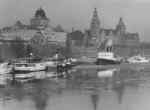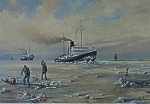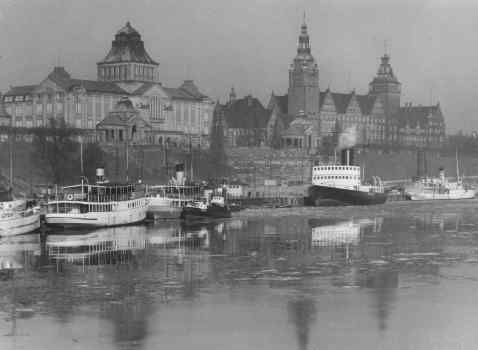 |
|||
|
|||
 |
Stettin, the capital of Pomerania, situated on the west bank of the River Oder, became the state's largest and most important city. Its geographical position on the Oder led to it being developed as an important trading and shipping centre. With 8.4 million tons of freight per year, Stettin was in 1936 second only to Hamburg as a major German port.
The cold winters in the east led to ice forming well before the end of December. Sea passages in winter without ice-breaker assistance would thus have been hardly possible. With the technical development of ice-breakers, Stettin was destined therefore to become the leading Baltic sea port. The city became the home-port of a privately owned ice-breaker fleet, and in 1933 Stettin gave its name to the ice-breaker which was until1945 the flag-ship of the afore mentioned fleet. Fortunately, the ice-breaker "Stettin" survived the diversities of war and is now a museum ship.
As an ice-breaker, the "Stettin" provided employment in winter for many seamen, and by securing an ice-free corridor for countless ships ensured an all-year round advantage for the city's merchants. Good fortune was with her throughout her service. The "Stettin" became a symbol of the past, the present, as well as the future, i.e.- never to give up hope.
|
After this last war-time engagement, "Stettin" came under the administration of the Hamburg Water and Shipping Office, the W.S.A, although the Chamber of Commerce, Stettin, remained the owners. Her new berth was in the Buoy Yard in Wedel near Hamburg. She remained in service until 1981 and was often engaged in wintertime on the Elbe, Kiel Canal, Kiel Bay and the Baltic.
When the Federal Waterways took over the administration of the ship, she was painted in the traditional colours, - black hull, grey and white superstructure and yellow funnel with a black top. The "Stettin" Association is obliged not to alter these traditional colours. There is a painting in the salon on board "Stettin" showing the ship in its original shipping company colours.
Because of high personnel and maintenance costs, it became uneconomic to keep the "Stettin" in service as an ice-breaker.
Finding the necessary trimmers and firemen also presented a problem. The Water and Navigation Management, North, therefore decided in 1981 to lay up the "Stettin".
|
|||
|
[Home]
[Association]
[Technical Data]
[Timetable]
[Contact]
[Berth]
[Links]
[Guest Book]
[Webmaster]
|




